In our travels as hunters, most of us have run into a situation where we have a doe tag to fill and come upon a doe that still has fawns with it. This is a widely debated subject, but is it really a good idea to shoot a doe that still has its offspring with her? What if that causes the fawns to die later? Should we shoot the fawn instead? I am here to answer all that and more, but to make it quick, here is the good news:
Whitetail fawns can be weaned and eat regular foliage at 10 weeks of age (70 days). Most fawns are born by late June, which makes them at least 3 months old before deer season starts in September. These fawns can be independent at this age, so shooting the mother doe will not impact their survival.
Whether you are dealing with an ethical dilemma, think your husband is evil for shooting your “momma deer”, or are just trying to shore up your quality deer management, this article is all about does with fawns and why it is okay to shoot them, and when you may not want to shoot them. Let’s get started with the basics.
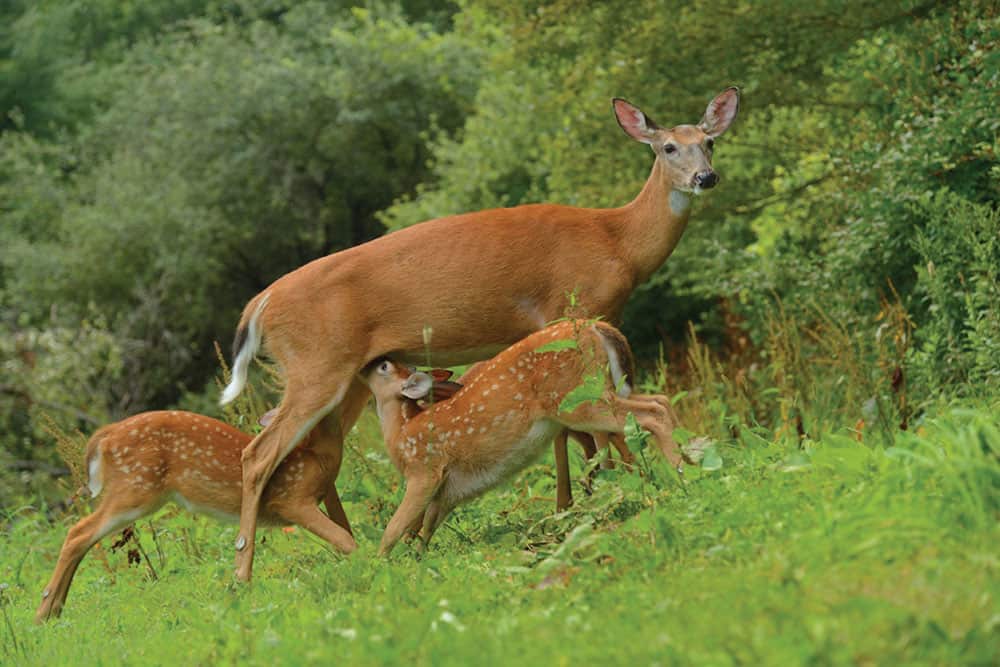
Fawn Dependence During Hunting Season
Fawns are highly dependent on their mothers during their infancy because they rely on the doe for sustenance through nursing. Though they are small in stature, these little critters will nurse around four to eight times per day, drinking up to a fifth of their body weight in milk every single day.
This dependency is what steers some hunters away from pulling the trigger when fawns are present, but these baby deer mature rather quickly. Generally, they learn to begin browsing (eating vegetation) when they are less than a month old and will be totally weaned off nursing within four months.
Long before this 4-month nursing period expires, at around 70 days, the fawn can successfully forage on its own. At this point, the nursing that occurs is more of a bonding exercise between the mother and her children.
Most does give birth about six months after mating season, with the majority of fawns being born in May or June. This means they no longer rely on their mothers for food by September or October, usually well before the rut gets underway.
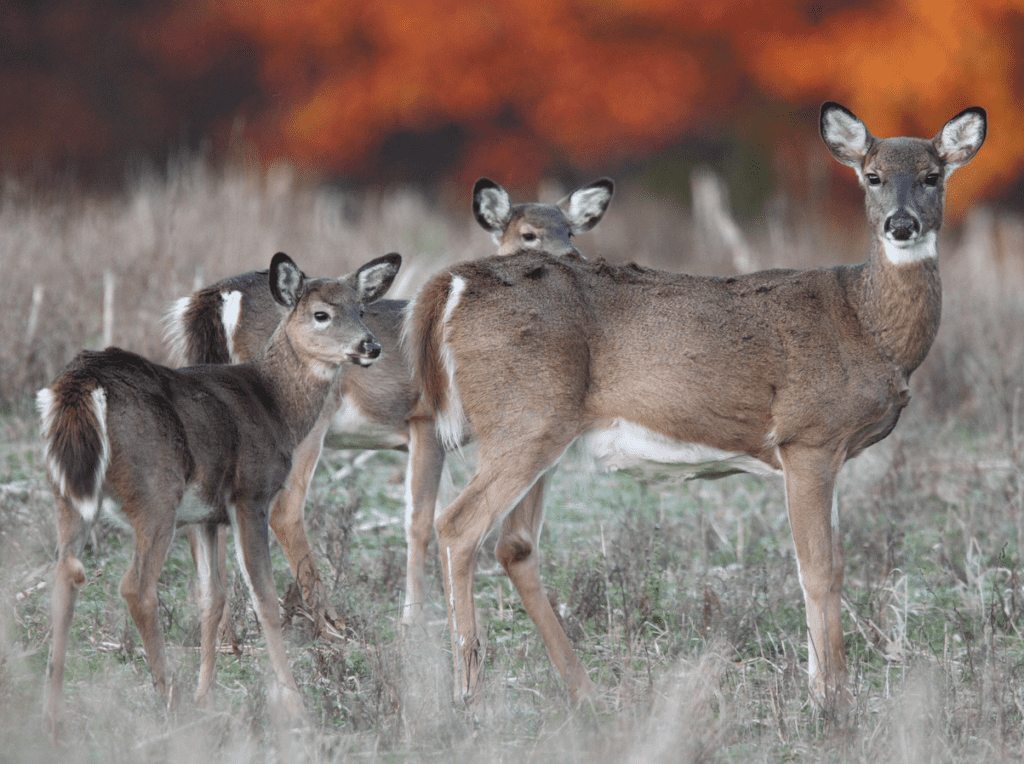
Shooting a deer with fawns in tow is a judgment call that most hunters will have to make at some point, but there is a big difference between a doe with a fawn that still has its spots and a doe with a mature fawn that can weigh upwards of 60 pounds. Fawns will typically lose these spots three or four months after birth, which is just about the time they can feed themselves and become much less dependent on their mothers.
Long story short, if you see fawns that still have their spots, you may want to pass on shooting the doe. If the fawns are spotless, this means that they have figured out how to feed themselves and have a much better chance of surviving on their own. You can sometimes still see spots on the rear end of an older fawn, but these are fair game too, they can certainly fend for themselves.
General Fawn Survival Rates
Fawn survival rates vary widely depending on things like the age of the doe, annual rainfall, presence of food sources, disease, birth weight, birth defects, and predation. An aggregate of the leading survival studies over the past decade shows that the fawn survival rate can range anywhere from 33%-68%. That means that 1 or 2 out of every 3 fawns will survive depending on these other factors that we mentioned.
Some studies even show that fawn survival rates in some areas are as low as 20%. So if you see a doe come by with a pair of 3 month old fawns that have survived this long, it may be hard to pull the trigger. As an average hunter, it can be hard to know what the fawn survival rates are on the property you hunt, but you can be certain that those 3 month old fawns have made it through the worst of it, and will likely make it to adulthood with or without their mother.
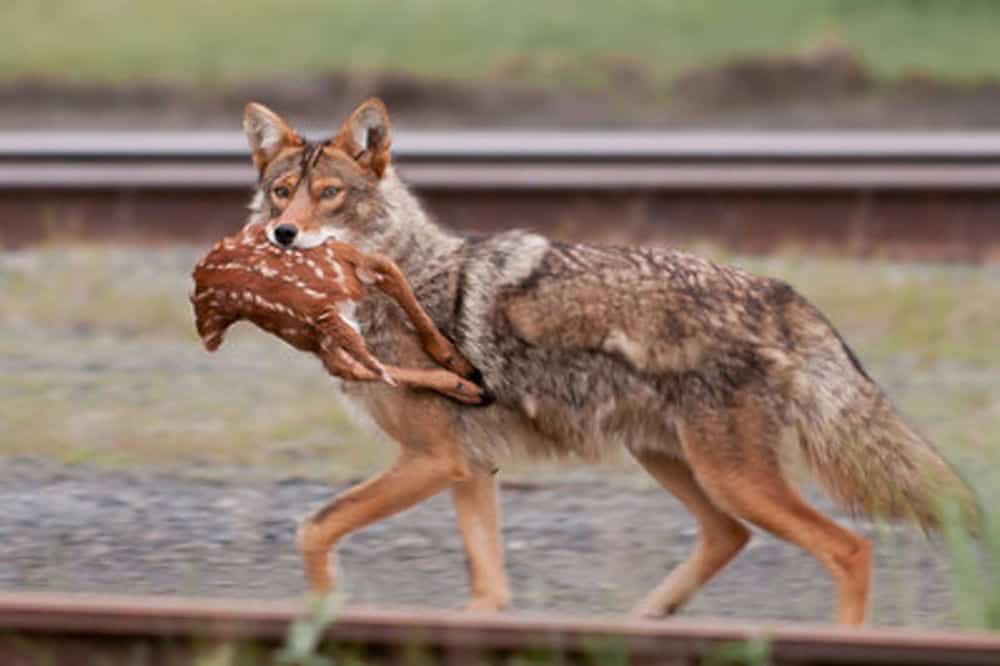
Overall Herd Impact of Shooting Does With Fawns
Imagine you are in the heat of the hunt in an area with a declining deer population. You are trying to fill your last tag, or maybe you are struggling even to get your first kill of the season. A doe steps out, and in a second you pull up your rifle, or draw back your bow, and give that doe a dirt nap. Then two fawns run off that were farther back in the brush.
If they had spots, they likely will not make it to next year. If they didn’t have spots, they should be fine. Although there is never a sure thing in hunting. If you are hunting an area with a dwindling deer population, shooting that doe with fawns is not likely the best way to get that population to thrive in the coming years.
Under opposite circumstances where the deer are overpopulated, taking that doe may actually help the herd in the long run. In many places where deer don’t have to worry as much about predation, they can overpopulate the area, deplete the resources, and cause the population to crash through decreased nutrition and increased fawn mortality rates. So taking a doe early season, with fawns or not, will leave more food for other deer during the upcoming winter.
To sum this all up, if a deer population is dwindling in a certain area, then it would be a good idea not to shoot a doe that has fawns present. You know she produces fawns successfully, and she can do it again next year, increasing deer numbers overall. If you still want to take a doe that year, try to find one that doesn’t have fawns. Although in an area where deer are thriving or even overpopulating the habitat, it can be beneficial to shoot a doe with fawns and leave the resources she would have taken up to the other deer.
You will have to get a feel for how the deer on your property are doing if you have not hunted there before. Generally, I do not like to kill a whole lot of deer off a property the first season I hunt it. I prefer to get a feel for the population and learn the lay of the land before I go making any changes.
Shooting Does With Buck Fawns Vs. Doe Fawns
So if you do decide to shoot a doe with fawns, is it better to shoot a doe with a buck fawn or a doe fawn? Well the first step is figuring out if the fawn is a buck or a doe. There is a common myth that you can tell a buck fawn from a doe fawn by the arrangement of its spots, this is absolutely false. Both sexes have a combination of random spots and lateral rows.
The only real way to tell the difference between buck and doe fawns is by examining their heads. Once they start to reach the early stages of maturity, a young buck will have a flatter head where small nubs are starting to grow (the early stages of antlers). These little nubs are called buttons, which is where the term “button buck” comes from for a buck fawn. Doe fawns on the other hand will not have buttons, but will otherwise look identical to buck fawns.
This is going to be very tough to see. Especially if you are looking at the deer from a distance, or they are moving fairly fast. If you truly care about the distinction, take the time to look, and pass on the doe if you aren’t sure.
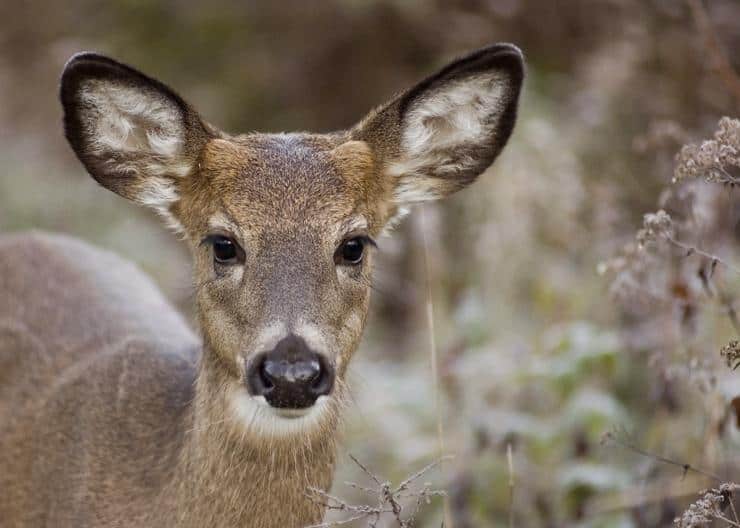
Evening Out Your Buck to Doe Ratio
However, there is a somewhat popular management strategy that encourages hunters to take does with buck fawns. Buck fawns more often than not, are pushed away from the mothers home range when they reach maturity. This is usually because the buck is old enough to realize he is a buck and his mother is a doe, and his only purpose in life is to impregnate does. The mother does not take kindly to this, and runs him off for good. This is nature’s way of eliminating interbreeding, and it is extremely successful.
So the buck fawns that your deer produce, more often than not, spend most of their lives on your neighbors property around 6 miles away, and never come back to yours. So if you take the doe, the buck ends up staying on your property throughout its life. This means more bucks on your property over the years, which is always a good thing.
This helps even out your buck to doe ratio, which is an important management statistic. If you want to learn more about buck to doe ratios, I have an entire guide you can read about it here.
Shooting Does With Fawns: The Facts
As with any issue that involves wildlife population management, there are going to be pros and cons to every situation. As a quick recap, let’s look over the takeaways thus far from this article.
Pros
- Those fawns are old enough – In general, deer seasons are late enough to allow fawns to be around 3 months of age before the season starts. This means the fawns are old enough to fend for themselves, and do not need to nurse from their mother even though the mother will allow them to nurse for up to 4 months. As long as the fawn does not have spots, or only has a few spots on its rear flank, it will be fine to take the mother.
- More resources for other deer – There is only so much food, water, and cover in any given area, so if fewer deer have to compete for these resources, the remaining deer will be healthier and larger. I think we can all agree that big bucks are the most sought-after deer out there, right?
- Improve your buck to doe ratio – shooting does with buck fawns can keep that buck fawn from being run off from your property by the doe, leading to more bucks overall on your property over time.
Cons
- Removing a fertile doe – if your property does not have a huge deer population, shooting a doe with fawns will keep her from making more fawns year after year. Only shoot a doe with fawns if you know the property has a large population of deer.
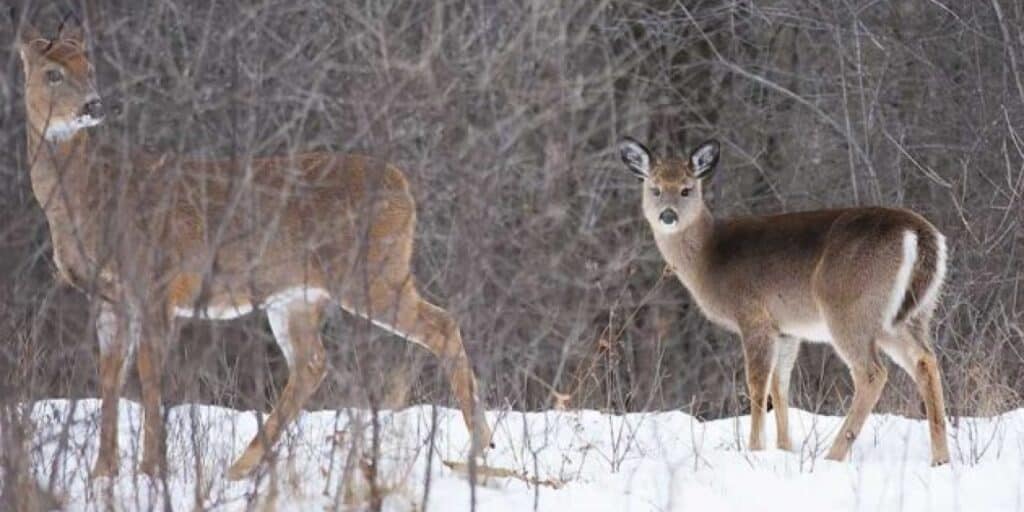
Should You Shoot The Fawns Instead?
Shooting fawns is not the worst thing in the world. It is entirely legal, and it has some upsides. If you want to harvest some deer from your property, but are not trying to harvest a ton of fawn producing does, then a doe fawn is the perfect target. Doe fawns are the least likely does to produce offspring in the coming year. According to multiple studies, doe fawns are least likely to have multiple fawns in a year, and are least likely to raise those fawns to maturity. That just comes from their sheer inexperience and youth.
Plus, doe fawns are young and tender. So if you take one, you can bet it will be some of the best eating you have had in a while. Long story short, if you want to eliminate a large number of deer from your property, shoot the mother so she doesn’t make fawns next year. If you only want to take a handful of does or be less aggressive with your harvest, shoot the doe fawn.
As far as buck fawns/button bucks go, I would avoid shooting them all together. Those are your future trophies, and I would rather take the fertile mother in exchange for a healthy buck anyday. However, when you are hunting and decide you are okay with taking a doe fawn, accidentally shooting a button buck happens. I did it just this year at roughly 100 yards. That is not the first button I have shot, and it won’t be the last. Although the more serious you are with your management, the harder you should look for those buttons.
Final Thoughts
Hunting is one of those activities that takes critical thinking skills, the ability to improvise on the fly, and the ability to make a quick judgment call in an uncontrolled environment. This is definitely part of what makes hunting so exciting and satisfying when you finally bag and tag a deer. You can make some predetermined decisions before you go out to the stand, but if you are anything like me, those decisions tend to fly out the window when a good looking deer steps in front of you.
The good news is that if you shoot a doe with fawns during the regular deer season, those fawns should be old enough to survive on their own. If they still have spots, you should likely hold off. Although if they have a regular brown coat, you can safely take the mother, or even the doe fawn. Either way, I hope this article calms your nerves a little bit, and makes that trigger finger a little happier.
Sister Post – Should You Shoot Spike Bucks? [The TRUTH]
If you are trying to manage your deer, there is always a difficult decision to make when a spike steps in front of you. Do you shoot him or not? Well, many people think you should cull a spike buck, but that is not always true. Of course, if you are just deer hunting and not trying to grow the biggest deer possible, shoot that spike if you want. However, keep reading…
Thank you for reading my article! I hope you enjoyed it, and if you have any questions or feedback, please send me an email at Patrick.Long@omegaoutdoors.net. If you want to learn more about me or Omega Outdoors, visit my About Page. Otherwise, I hope you have a great day, and check out some of my other articles while you’re here!
